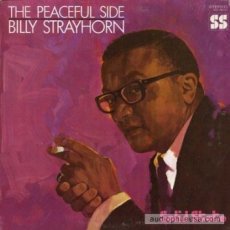
Daily Dose Of Jazz…
Billy Strayhorn was born William Thomas Strayhorn on November 29, 1915 in Dayton, Ohio but the family moved to Pittsburgh, Pennsylvania shortly after his birth. Protecting him from his father’s drunken sprees his mother sent him to live with his grandparents in North Carolina, which is here he first became interested in music. He learned to play hymns on the piano and listening to records on her Victrola.
By high school he was back in Pittsburgh and began his music career studying classical music, writing a school musical, forming a trio that played daily on the radio and composing Life Is Lonely (renamed Lush Life), My little Brown Book and Something To Live For while still in his teens.
When the harsh reality of a black man making it in the white classical world shattered his 19-year-old ambitions, Strayhorn turned to the music of Art Tatum and Teddy Wilson and was guided into jazz. In 1938 he met Ellington, impressed him with an arrangement of a Duke piece, went to New York and collaborated with Ellington for the next quarter century. He composed Take The “A” Train, Chelsea Bridge, Day Dream, Such Sweet Thunder and A Drum I A Woman among others and the landmark score to the film Anatomy Of A Murder.
Billy was openly gay, participated in many civil rights causes, was a committed friend to Dr. Martin Luther King, influenced and help propel the singing career of Lena Horne, embarked on a solo career and continued to compose and arrange for Ellington.
Billy Strayhorn, composer, pianist and arranger whose compositions are known for the bittersweet sentiment and classically infused designs that set him apart from Duke succumbed to esophageal cancer on May 31, 1967. His final song “Blood Count”, composed while in the hospital, was the first track on Ellington’s memorial album for Strayhorn, …And His Mother Called Him Bill. The final track is a solo version of Lotus Blossom performed by Duke for his friend while the band was packing up.
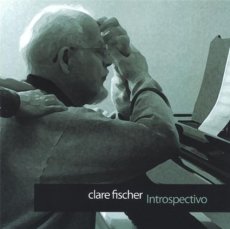
Daily Dose OF Jazz…
Clare Fischer was born October 22, 1928 in Durand, Michigan and started general music study in grade school with violin and piano as his first instruments. By age 7 he was picking out four-part harmony on the piano and by 12 was composing classical music and creating instrumental arrangements for dance bands.
In high school he added cello, clarinet and saxophone to his arsenal of instruments and studied music theory, harmony and orchestration privately. He started his own band at 15, writing all the arrangements, went on to college studying music composition and theory as a piano major. After graduation and a stint in the Army as the arranger for the U.S. Military Academy Band at West Point, N.Y., he returned to Michigan State and received his Masters in 1955.
He went on to arrange for the vocal quartet Hi-Lo’s that would later become a major influence on Herbie Hancock, would record under his own name in 1962 for Pacific Jazz, play with Bud Shank, Joe Pass and Cal Tjader among others, arrange for Sergio Mendes and Willy Ruff, began playing organ and composed his most famous compositions, Pensativa and Morning.
By the mid-‘70s Fischer was pioneering the electric keyboard, reconnected with Tjader started his group Salsa Picante, won a Grammy for his album 2+2 and Free Fall, forayed into R&B doing orchestral sweeteners, worked with Rufus with Chaka Khan, The Jacksons, Earl Klugh, The Debarges, Shot-gun and Atlantic Starr and pop artists such as Paul McCartney, Prince, Celine Dion and Robert Palmer, picking up numerous gold records.
From the Eighties on Clare has been commissioned to score symphonic work using Duke Ellington and Billy Strayhorn themes, working with Branford Marsalis, the Netherlands Metropole Orchestra, arranged for Spike Lee’s Girl 6, has conducted clinics and master classes at numerous universities, and continued to record in small group and orchestral settings until his death in Los Angeles, California on January 26, 2012 at age 82..
More Posts: arranger,bandleader,composer,keyboard,piano,saxophone,synthesizer
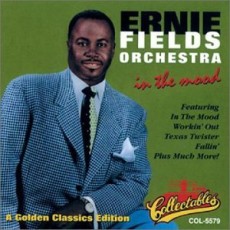
Daily Dose Of Jazz…
Ernie Fields was born Ernest Lawrence Fields on August 28, 1904 in Nacogdoches, Texas, though raised in Taft, Oklahoma. He attended Tuskegee Institute before moving to Tulsa. From the late 1920s, he led the Royal Entertainers, and eventually began touring more widely from Kansas City, Kansas to Dallas, Texas, and recording. Fields’ band became the first African-American band to play at Tulsa’s landmark Cain’s Ballroom.
A 1939 invite to New York by John Hammond to record for Vocalion. He began touring nationally, never became a star but continued to work steadily, recording for smaller labels, and gradually transforming his sound through a smaller band and a repertoire shift from big band and swing to R&B. During WWII he entertained troops both at home and abroad.
Continuing to straddle these styles into the 1950s, Ernie played swing standards such as “Tuxedo Junction” and “Begin The Beguine” in a rocking R&B style. In the late 1950s he moved to Los Angeles, California and joined the Rendezvous Records and ran the house band In 1959 this band had an international hit with an R&B version of Glenn Miller’s “In The Mood” that reached #4 on the Billboard chart, selling over a million copies. He would go on to record instrumentals under a variety of names including B. Bumble and the Stingers, The Marketts and The Routers.
After Rendezvous Records folded in late 1963, trombonist, pianist, arranger and bandleader Ernie Fields retired and returned to Tulsa. He died on May 11, 1997, at the age of 92.
More Posts: arranger,bandleader,piano,trombone
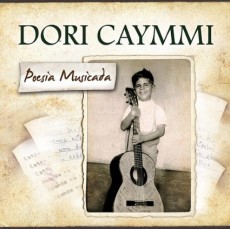
Daily Dose Of Jazz…
Born August 26, 1943, Dorival Tostes Caymmi, the son of famous Brazilian musicians Dorival Caymmi and Stella Maris. He began playing piano at age eight, studied music theory at the Conservatorio Lorenzo Fernandez and in 1959 made his professional debut accompanying his sister, Nana.
In 1960 Dori became a member of Groupo dos Sete, writing music for plays aired on Brazilian television. He co-directed and played viola in the play Opinião, an important transitional work between the styles of bossa nova and MPB and directed the play Arena Conta Zumbi. For a time he produced Edu Lobo, Eumir Deodato and Nara Leao, co-wrote the prize winning song “Saveiros” with Nelson Matta, a collaboration that lasted many years and produced some of Brazil’s biggest hits.
Caymmi played and toured with Paul Winter, arranged and directed albums by Caetano Veloso, Gal Costa and Gilberto Gil, and was involved with the tropicalia movement of the late 1960s, but did not record in this style himself due to his distaste for Euro-American pop music. He wrote scores for numerous films and television shows in the 1970s and 1980s, moved to Los Angeles, California in 1989 and has since played or recorded with Dionne Warwick, Toots Thielemans, Marilyn Scott, Oscar Castro-Neves, Eliane Elias, Richard Silveira and Edu Lobo; was a collaborator celebrating Tom Jobim at Carnegie Hall and arranged the music for Spike Lee’s film, Clockers.
Dori Caymmi has been nominated for Latin Grammys several times and is a two-time Grammy Award winner for Best Latin Song and Best Latin Samba Recording. The Brazilian singer, guitarist, songwriter, arranger, and producer has an extensive discography dating back to 1964 and he continues to perform and record.
More Posts: arranger,composer,guitar,songwriter,vocal
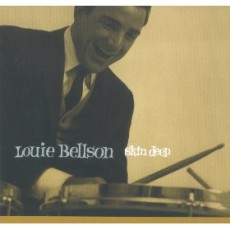
Daily Dose Of Jazz…
Louie Bellson was born Luigi Paulino Alfredo Francesco Antonio Balassoni on July 6, 1924 in Rock Falls, Illinois. He started playing drums at three years of age and at 15 pioneered the double-bass drum set-up. By 17 he triumphed over 40,000 drummers to win the Slingerland National Gene Krupa contest and graduated from high school in 1939.
1943 saw Bellson performing with Benny Goodman and Peggy Lee in the film “The Powers Girl” followed two more by the decade’s end. Between 1943 and 1952, he performed with Benny Goodman, Tommy Dorsey, Harry James and Duke Ellington, for whom he composed “Skin Deep” and “The Hawk Talks”. In 1952 he married Pearl Bailey, leaving Ellington to be her musical director, a union that lasted 38 years until her death in 1990.
Through the 1950s and 1960s, Louie performed with Jazz At The Philharmonic or J.A.T.P., Tommy and Jimmy Dorsey, Count Basie, again with Duke Ellington and Harry James, as well as appearing on several Ella Fitzgerald studio albums.
Equally adept as a big band or small group drummer, Bellson recorded extensively and led his own big and small bands, occasionally maintaining separate bands on each coast. His sidemen have included Blue Mitchell, Don Menza, Larry Novak, John Heard, Clark Terry, Pete and Conte Candoli and Snooky Young.
Louie Bellson, composer, arranger, bandleader and jazz educator passed away from Parkinson’ s disease on February 14, 2009.
More Posts: arranger,composer,drums,educator,musical director


